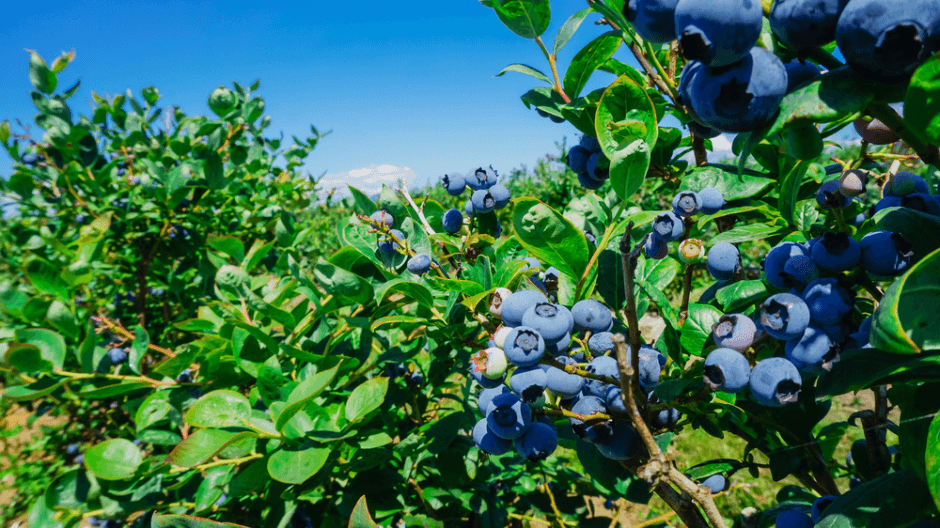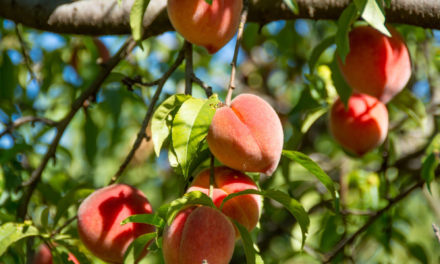Prior to the 1900s, blueberries were not a common household fruit. In fact, they were only found in the wild in North America. Thankfully though, scientists have uncovered a way to cultivate blueberries, and now, you can easily grow them in your own garden! In this article, we'll talk about how to plant blueberries, how far apart they need to be spaced, what kind of soil they need, how often they need to be watered, and much more!

The great thing about growing blueberries, is that most varieties are pest and disease resistant, and can also produce for up to 20 years! If that isn't reason enough to grow your own blueberry bushes, they're also packed full of vitamins and antioxidants, making them one of the healthiest fruits in the world (not to mention they're very low in calories too!). Additionally, growing blueberries is also very easy as they're pretty low maintenance and don't require a lot of care. Before we get into how to plant blueberries, let's take a quick look at the different types of blueberry bushes that are available.
Types of Blueberry Bushes
There are four different types of blueberry bushes: lowbush, highbush, rabbiteye, and hybrid half-high. So what's the most common type of blueberry then? The most common of blueberry bushes is the highbush. More often than not, the highbush will be the variety you'll most likely encounter at your local nursery.
When to Plant Blueberries
The best time to plant blueberries bushes is in early to mid-spring, after all danger of frost has passed. For best results, we recommend you purchase already grown blueberry bushes that are anywhere from 1-3 years old. Usually these are purchased in containers or are bare-root. Your local nursery should have these bushes available for purchase (in North America).
Where to Plant Blueberries

Now that you've got your blueberry bush, it's time to pick a planting site! Blueberry bushes prefer a sunny, albeit sheltered location. They can receive some shade, but will thrive in sun for the most part. It's important to keep your blueberry bushes away from harsh winds, so if you have open space, choose a site that will not only receive lots of sun, but will also be sheltered.
How Far Apart to Plant Blueberries
First thing's first: don't plant blueberry bushes close to other trees or plants. This is because trees will shade the bushes, but also compete for the same nutrients in the soil. If you're growing several blueberry bushes, it's best to plant them in a patch rather than all throughout. The reason for this is because when they're in a patch, they will feed off of one another and berry production will increase, as will quality. Unlike other plants, blueberry bushes like to be pretty close to one another, so plant them anywhere from 2-10 feet apart.
What Type of Soil Do Blueberries Need?
Blueberries have very shallow roots, and therefore need soil that will hold moisture well, but also soil that is well draining. Blueberry bushes do not like heavy soil that contains clay. Choose an acidic soil with a pH of 4.0 to 5.0 for best results. You can add acidity to the soil by mixing in a small amount of granulated sulfur before planting. Additionally, you can also add peat moss or pine needles to up the acidity level. Before setting your blueberry bushes, mix in some organic matter.
How to Plant Blueberries

- After you've prepared the correct soil, dig a hole that's twice as wide and twice as deep as the root of the plant. This will vary from plant to plant, but it's usually about 20 inches deep and 18 inches wide.
- If you're growing in rows, space each row at least 8 feet apart.
- Prepare a planting mixture of 2 parts loam and one part peat moss, sawdust, or compost, and lay this mixture at the bottom of the hole.
- Pack the hole tightly using your hands.
When to Fertilize Blueberry Bushes:
Apply fertilizer one month after planting the bushes, and not at the time of planting. Apply 1/2 ounce of a 10-10-10 fertilizer 6-12 inches away from the crown. Because blueberries are part of the rhododendron and azalea family, you would use the same type of fertilizer.
How to Grow Blueberries in Containers
For most home gardeners, it's actually much easier to grow blueberries in containers. This is because you can protect the berries from birds and critters, amend your own soil, and also easily move the pot to where you want it. Choose a large pot or container with drainage holes. Fill the pot with a potting mix that's designed for rhododendrons or azaleas. Alternatively, you can also mix your own potting mix by mixing sandy soil with compost and peat moss. Plant your blueberry bush in the soil and add mulch on top to retain moisture. Water regularly, keep away from high winds, and place in a sunny spot. In the winter, cover the blueberry bush with burlap or straw.
If you're growing a blueberry bush in a pot, there are several different varieties which are perfectly suited for that type of medium. These are: Pink Lemonade, Top Hat, and Pink Champagne. Pink Lemonade blueberries are actually pink in color and will grow in almost any cliamte! Top Hat blueberries were designed to grow in small spaces and containers. Pink Champagne blueberries are also pink, but are sweeter than blue blueberries.
How to Care for Blueberry Bushes
- Properly mulch the blueberry bushes to keep the root system moist. Do this by applying a 2-4″ layer of pine needles, sawdust, or woodchips around the bush right after planting. Be sure to leave a gap around the trunk of the bush for proper airflow.
- Water blueberry bushes 1-2 inches per week.
- Protect the bushes from birds by placing bird netting over the plants. Birds love to snack on blueberries, but if you do too, you'll need to keep them protected.
- One year after planting, in the spring, apply a 10-10-10 fertilizer at blooming time. Increase the rate by 1 ounce each year after, to a maximum of 8 ounces per bush.
- The blueberry bush should not be allowed to produce fruit in the first and second year after planting. If you see any blossoms developing in the first and second year, pinch them back. This will allow the blueberry plant to get used to its new home, and the energy will go towards the roots. Doing this will make for some delicious and healthy blueberries!
How to Prune Blueberry Bushes
- Blueberry bushes do not need to be pruned for the first 4 years of growth.
- After 4 years, prune the bushes regularly to promote growth. Do this in late winter or early spring before any new growth appears.
- Remove and cut off any dead, broken, or weak shoots.
- Remove weak twigs, branches that are older than 6 years old, or drooping branches that touch the ground.
- Lowbush blueberries should be pruned by cutting all stems to ground level. This pruned bush will not fruit next season, but the one after that.
How to Harvest Blueberries

Once your blueberry bushes are ready to produce fruit, you should be able to harvest them in the summer months, between June and August. It's important to not rush and pick the blueberries – once they turn blue, wait a day or two – they should fall right into your hand when touched. If you've planted a 2 year old blueberry bush, your plant should start fruiting within a year or two. During this time, pick off any flowers. Full blueberry production is only reached after about 6 years, for most varieties.
Blueberry Pests/Diseases
Blueberries are susceptible to birds and critters, powdery mildew, and blueberry maggots.



















